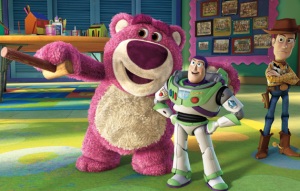United States Senators have gotten involved. So has the Federal Trade Commission. By creating new features such as “social plug-ins,” Facebook is hoping to “personalize the Web.” Yet the question remains: Do web users want a personal Web experience at the risk of losing privacy? It seems as though these days, you can’t have both personalization and privacy when it comes to using the Internet.
With the social plug-ins, Facebook users visiting other web sites have the chance to like a certain brand of clothing or a favorite sports team and have that information appear right back on Facebook. The social networking site claims that no personal information is collected by these outside web sites, but try explaining that to Facebook users.
According to an article from CNN, these new Facebook features are giving many users cause to give up Facebook. Even though Facebook does not publish statistics on how many people quit the social networking site altogether, there is reason to believe that numbers would show an increase in the number of users quitting if that information was made available.
Rest assured that Facebook does not want you to leave – why would it? CNN reports that Facebook has made it difficult to figure out just how to do so, for there is a difference between deleting your profile and deactivating it. Many users who deactivate their accounts thinking they deleted them may be surprised to learn that Facebook still has their photos and wall posts.
Facebook certainly isn’t going away anytime soon though.Since the end of April, Facebook has gained over 10 million active users, which makes sense seeing as the people who are just now joining Facebook most likely really want to use it as opposed to Facebook “lifers” who have been around since the site’s inception in 2004.
These “lifers” who may be considering walking away from the site completely may have a hard time actually doing so. Read: Business Insider presents “10 Reasons You’ll Never Quit Facebook”. This list makes some very valid points about why users may never leave. For instance, how will we remember each other’s birthdays? (Wait, what’s a calendar?) How can we stalk someone without legal concerns? Perhaps most importantly, who would tend to our virtual crops?
For those users coming to the realization that they can’t step away from Facebook just yet, fear not – Business Insider also offers a step-by-step guide for how to “Put Facebook on a Privacy Lockdown.”
All Facebook, the “unofficial Facebook resource,” also offers helpful information for making your Facebook profile as secure as you’d like it to be. From its list of 10 Privacy Setting Every Facebook User Should Know, I was able to learn a few privacy features that I didn’t know about previously. These include using “Friends Lists” to control which friends categorized by lists can see what along with removing your profile from turning up in search engine results pages.
With almost 500 million registered users, Facebook – the “Internet’s water cooler” as USA Today calls it – CEO Mark Zuckerberg has a lot of clients to keep happy. In response to recent concerns about its tricky privacy settings, Zuckerberg stated: “Our incentive is to give people the exact controls they want, so they can share the most information. More and more people want to share information. That is where the world is going.”
In Facebook’s defense, the site does offer a help center featuring information on privacy settings and fundamentals. This page allows users to figure out how to control how their findings in search results, what “everyone” and “friends of friends” means when it comes to viewing profiles, and how to protect their secure information.
An article on WebProNews questioning whether or not Facebook’s new privacy settings will really protect your privacy, claims that “no privacy settings are truly going to protect people’s privacy on Facebook – and that’s not Facebook’s fault.” Instead, the author, Chris Crum, attributes this to a “combination of human nature and technology.” He explains:
If you’re worried about privacy and how it is related to Facebook, it really doesn’t matter how many times Facebook adjusts its privacy settings. The fact of the matter is that there is no more privacy, unless you don’t interact with people whatsoever. This applies whether you have a Facebook account or not. That really makes no difference if someone whips out their phone and takes a picture of you. With most modern phones, all they have to do is tap a button to send it right to Facebook for all of their friends to see. Did you say or do something embarrassing at a party? Witnesses can easily become instant broadcasters, and there’s a good chance that some of their Facebook friends know you.
Did you casually mention something to a friend? Anything? They may mention it in a status update and instantly let all of their friends know about it. Whether or not they did this with any malicious intent is irrelevant. It happens. Human contact in general should be considered non-private. If you say or do anything that you truly want kept private, you better keep it to yourself or let people know you don’t want others to know about it (and hope that they care).
In the end, it seems as though Facebook is only as private and secure as you make it. Users can set their privacy settings so that no one can find them – not even Mom and Dad. Problems arise when users aren’t aware of these settings and what information about them is available to the public. By taking a few minutes to reexamine your privacy settings, Facebook should be a better site for you to use. At least until you get poked again. Or get that invitation to join Farmville again. Or get that friend request from your boss again…


























